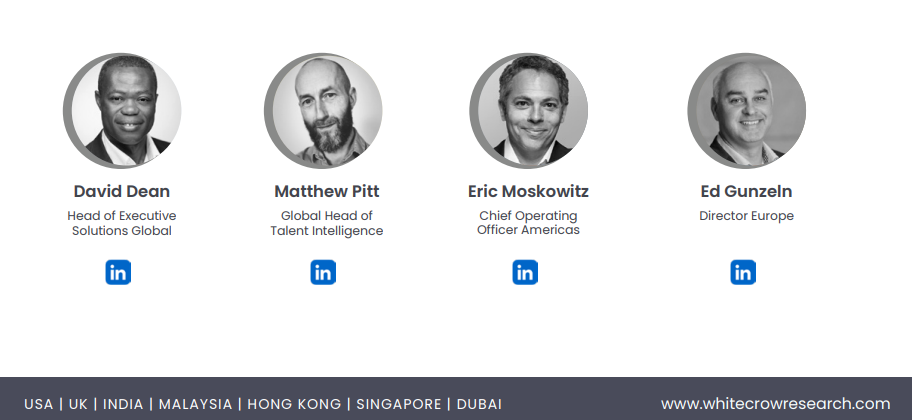A quarterly digest of facts, figures and opinion from the Talent Aquisition sector
April 2025

Be afraid. Be very slightly afraid.
AI is already changing the TA landscape but transformation will be slow.
The only certainty about AI is that everyone is talking about it. But while some welcome the new technology’s potential, others express fear about everything from job losses to more apocalyptic scenarios akin to a dystopian Christopher Nolan movie.
The reality, at least as far as Talent Acquisition is concerned, is probably some where in between.
WhiteCrow recently visited HR Tech in Amsterdam where we met vendors, tried out a few (very wizzy) platforms and, most importantly, compared notes with TA and HR leaders from around the world. Based on those discussions, our European Director, Ed Gunzeln, has put together a list of the three things every recruiter should think about when it comes to AI:
1. The role which will change the most is yours. . .
TA leaders wondering which roles will be most affected by AI should start thinking slightly closer to home. Operational tasks like communicating policy, writing job specs or even generating shortlists will increasingly be undertaken by robots. That means TA leaders will have to become more consultative. That’s good news for those who have the skills to but it means the clock could be ticking on TA managers whose way of thinking is more operational.
“The future” says Ed, “is less about talent acquisition than talent management & advisory . . . For day-to-day recruitment stuff, hiring managers will be deploying AI, so it’s only when they encounter more intractable, qualitative problems that they’ll come knocking on the TA door.”
2. It’s all about strategy . . .
Another reason why TA leaders will need to be more strategic in future is the sheer multiplicity of AI tools out there in the market. How to choose which ones to buy? “It’s really difficult,” says Ed, “because some tools essentially just do one task – for example, setting up meetings – so TA leaders actually have to assemble a suite of solutions”. Then, of course, your tools need to be both compatible and future-proof so that you don’t end up splashing three years’ budget on a tech setup which is out of date in six months. Clearly such consequential decision-making can only be undertaken by someone with a big picture mentality. Stakeholder management skills will also come in handy because no decision should be taken without factoring in advice from IT, Legal, Compliance and Operations colleagues.
3. There’s a big difference between Europe and America . . .
Last year, Forbes published its sixth annual AI 50, a go-to list of the most exciting AI startups. As with previous years, the overwhelming majority of featured companies were headquartered in America. There are a number of reasons for this, but not least among them in the US’s relatively light-touch regulatory environment. So AI enthusiasts could be forgiven for being somewhat downbeat about the new European AI Act. However, Ed strikes a more upbeat note. “Yes, it’s more regulation, but at least it provides clarity. The one thing investors hate is uncertainty, so this Act should theoretically help the money to flow towards the best ideas”.
So how quickly should TA leaders expect their world to be upended? Ed reckons nobody should be too panicked – or excited – quite yet : “One of the reasons AI has so far made only limited inroads to recruitment is because inventors aren’t treating it as a priority. Frankly, there is lot more money to be made automating a car factory line than an interview process. Even so, TA leaders should be experimenting and piloting use cases so as not to fall too far behind.”

The World According to WhiteCrow

As one of the world’s largest sourcing and recruitment company, WhiteCrow works with clients
across multiple geographies and sectors. So a brief glance at what we’re working on ought to provide a clue to what’s going on in the wider market.
Over the last quarter, the data tells us this:
- The trajectory on both clients and projects was consistently upwards. That’s got to be good news – an indication that hiring managers have money to spend and company decision makers feel confident enough to take on new staff.
- Of course, this data is historic and (as we discuss below) the global economy has had something of a wobble recently, so it will be interesting to see next quarter’s graphs. Our hope is that the numbers won’t be too dissimilar, although there may be a greater percentage of research versus recruitment projectsas hiring managers seek clarity and talent intelligence before they go to market.
- WhiteCrow is sector-agnostic, so our work covers every industry and function, but we’re seeing a noticeable uptick in work from technology clients. We’re also seeing non-tech clients showing increased interest in tech-related roles. One client is undertaking a very interesting study to measure the extent of AI-related skills across the leadership teams of its close competitors.
- Another product keeping us busy is location analysis . . . with a slight difference. It used to be that clients would ask us where they should locate a team or function. Nowadays, they usually know the preferred location, but are worried they might be too late to the party. Offshoring centers can sometimes become of their own success, as companies crowd in, salaries rise and talent becomes more difficult to find or attract. Our job is to make sure clients don’t make expensive mistakes which takes years to unravel.
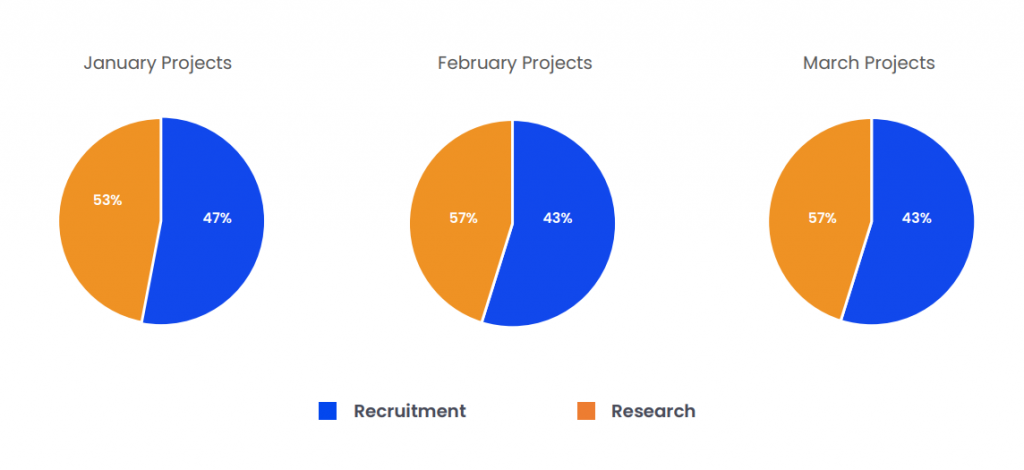
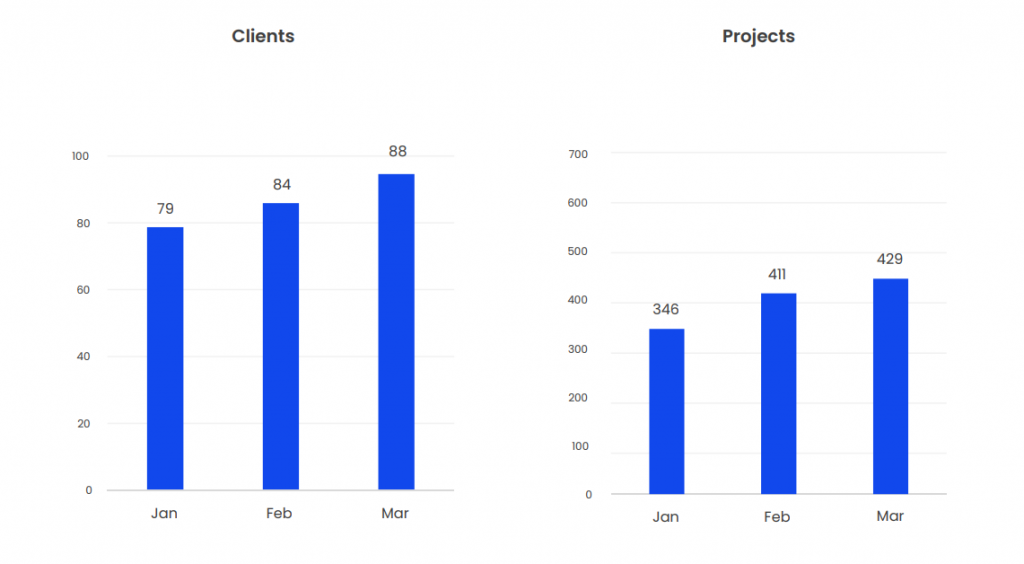
Talentomics
Whatever your view on the big issues of the day, we can all agree these are unpredictable times. That’s a nightmare for workforce planning. So now more than ever Talent teams need to be across the numbers. Below, we share a selection of economic charts and comment briefly on their implications for recruitment.
1. Do you feel liberated?
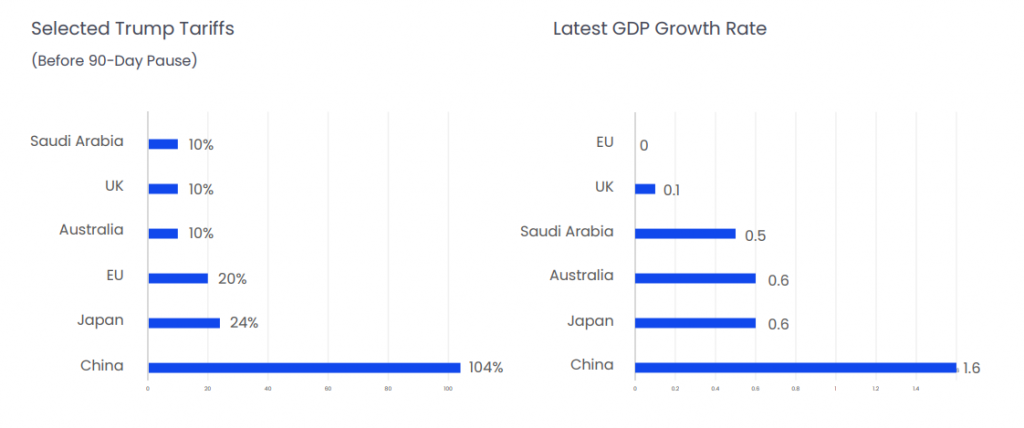
- Unless you’ve been hiding under a rock, you may have noticed the markets have been a bit jittery of late. The reason, of course, is Donald Trump’s so-called Liberation Day and the slapping of punitive tariffs across pretty much every country in the world.
- As we write, the US President has just announced a 90-day pause on some of the most draconian tariffs, so perhaps the whole thing is just an elaborate negotiating tactic. But even if it is, the signs are it’s going to take a while to play out. What does that mean for jobs?
- Well, when you look at current growth rates across the world, it’s hard to imagine there won’t be multiple layoffs as business costs soar and corporate revenues nosedive. Even a small downward ‘correction’ would be enough to tip most economies into recession. In our lead article, we discussed how Talent leaders increasingly need to reinvent themselves as advisors to the business. If AI doesn’t prove the case, then Donald Trump just might . . .
2. Why do people leave?
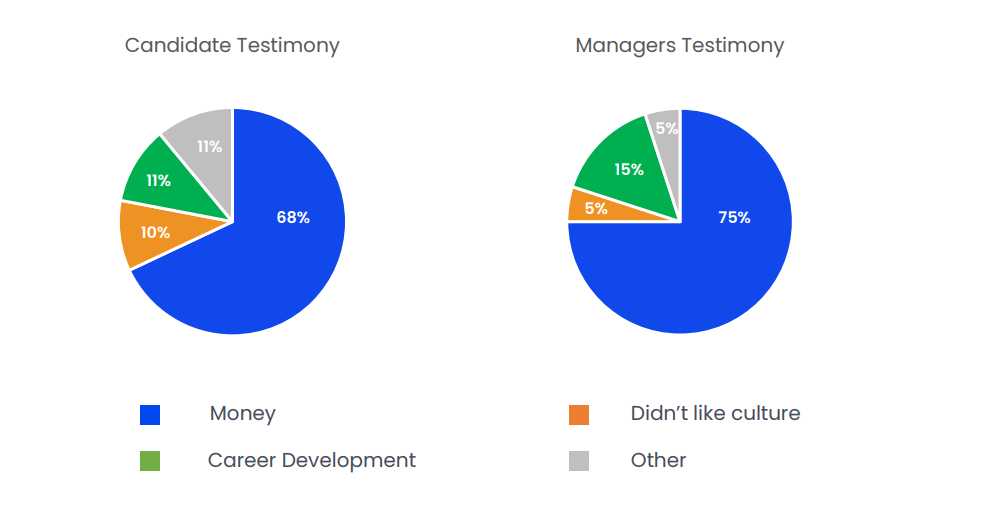
- A couple of our recent projects have re-emphasized a point that the Whisper has made a few times in the past; i.e. candidates tend to move jobs for money rather than any more noble reason such as culture, work/life balance or working for a company which is saving the planet in some way.
- But while working on a location analysis study in Malaysia, we came across an interesting twist on this point. Hiring managers assume people leave their jobs for financially motivated reasons more than candidates (by their own testimony) actually do.
- This raises an obvious question. If hiring managers are that cynical about why people leave, why do they still imagine people will join because of the brand or culture? Or perhaps they don’t. It could be what we’ve identified here is a disconnect between talent managers who craft job specs and ad postings and team leaders who have a more informed sense of why they’ve lost staff in the first place.
3. Flying Blind?
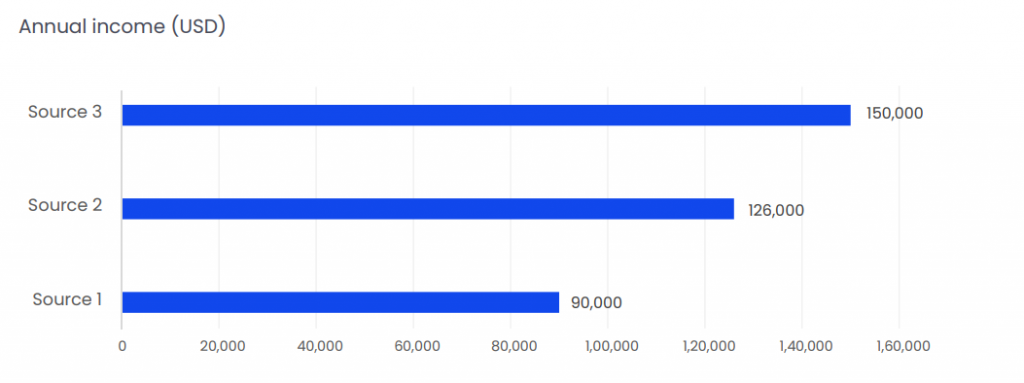
- How much does an airline pilot make a year? We asked three Captains, each of roughly the same experience. As you can see from the graph above, their answers were very different. As if this isn’t puzzling enough already, it’s also worth noting that they all worked for the same airline.
- This points up the difficulty of salary surveys. It’s clearly dangerous to depend on secondary data, but even primary data – testimony gleaned directly from candidates – can be unreliable. Some sources include benefits in their calculations. Others don’t. It’s also not unknown for candidates to inflate their pay, especially if they’re talking to a headhunter. So unless your data has been rigorously checked and doublechecked, you could be flying blind, so to speak.
- The only way to deliver a really reliable salary survey is to speak to lots of people. Fortunately, WhiteCrow Research has the resources and firepower to do precisely that. Next time you want to know what the market is really paying, it’s worth giving us a call.
Quote of the Quarter

One of our recent projects in the US looked at how companies utilize career development programs for high-performing workers. Our key finding was that most organizations talk a good game about such programs but actually have very little in place. Where such initiatives do exist, they tend to be quite localized, both functionally and geographically; for example, a ‘hipo’ program in a contact center will only facilitate your progress within the contact center ecosystem.
But one company – a major investment bank – stands out for running a highly successful program which enables the best employees to plot an upward career path of their choosing. Thus, someone in marketing could theoretically move into compliance or trading.
Of course, this requires a degree of altruism from team leaders. If you’ve got a great worker in your team, why would you enable them to take their talents to some other area of the business? Well, it depends how collegiate you are. Do you want the best for the wider business or just your unit?
Clearly, the team leader we quote above took the view that it’s always best to think generously – both on behalf of your employer and your employee. Good for them.

Wordplay
Like any industry, recruitment has its lexicon of odd words and phrases. The best of these serve to illuminate complex topics; the worst merely confuse and obfuscate. As for the rest, well, let’s take a closer look . . .

It’s probably too late to kill this infuriating phrase because it’s been a staple of business meetings for years. It’s used of course when someone wants to defer discussion of something until later. Often delivered in a brisk, slightly pompous tone, “circle back” is no doubt intended to suggest the speaker has an orderly, methodical mind and a keen understanding of the matter in hand. Which is odd. Because a really clever person wouldn’t circle back at all. They’d just go back. Circling back implies an unnecessarily circuitous journey. In fact, saying the phrase at all is a poor use of time. “Go back” has two syllables whereas “circle back” has three and it’s not at all clear what the extra one achieves.
Contact
To discuss any of the issues raised in this month’s newsletter or to explore how WhiteCrow Research can help with any of your talent insight and recruitment needs, please contact us.

